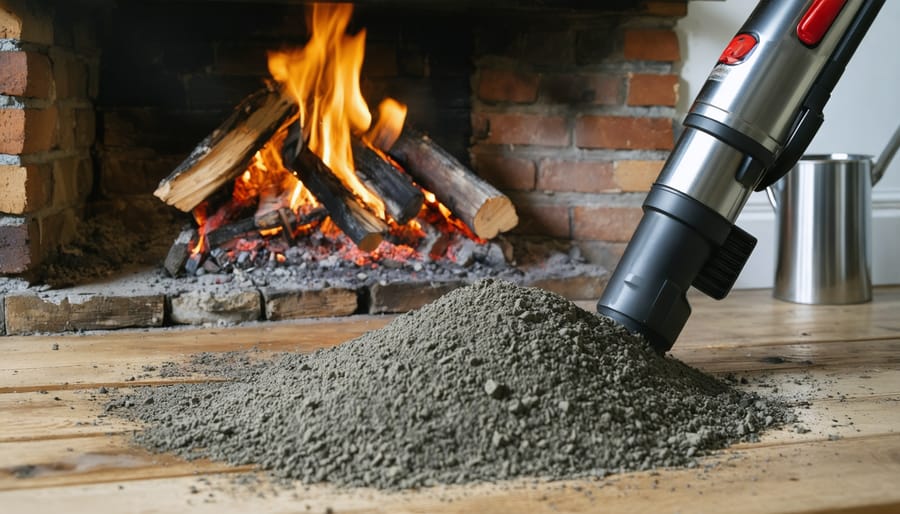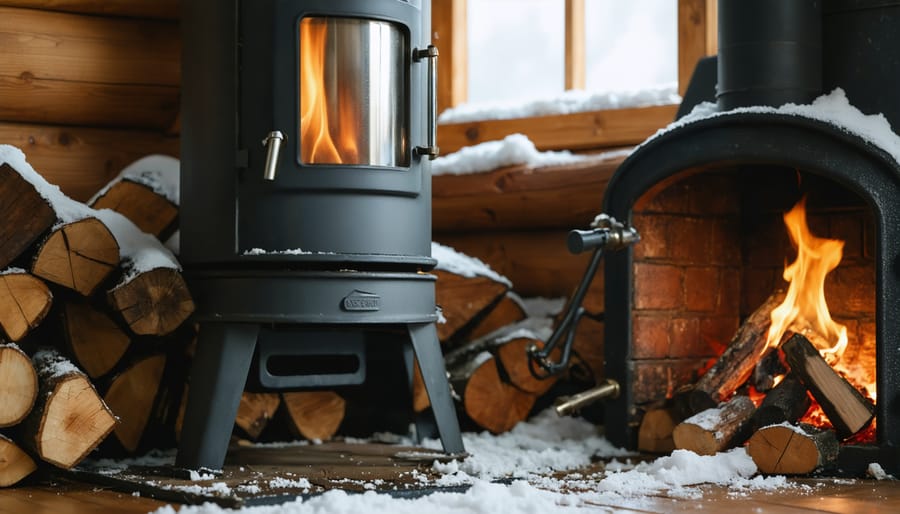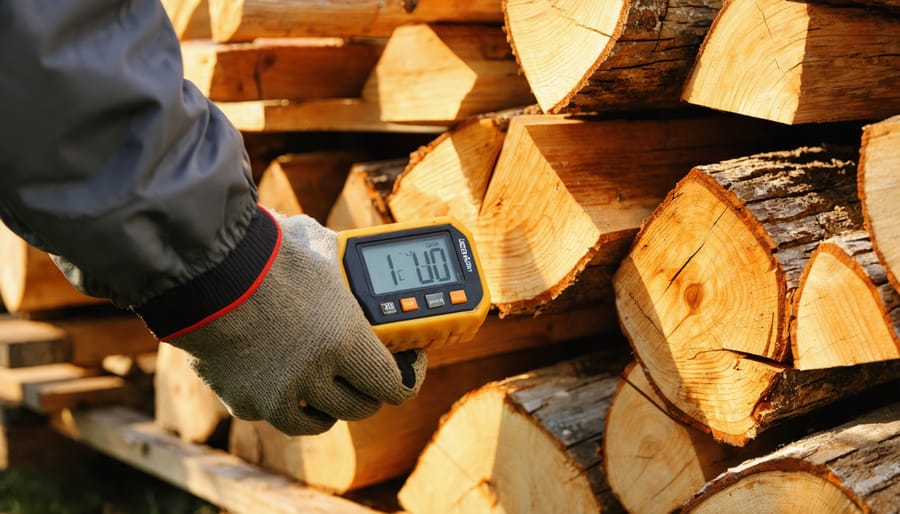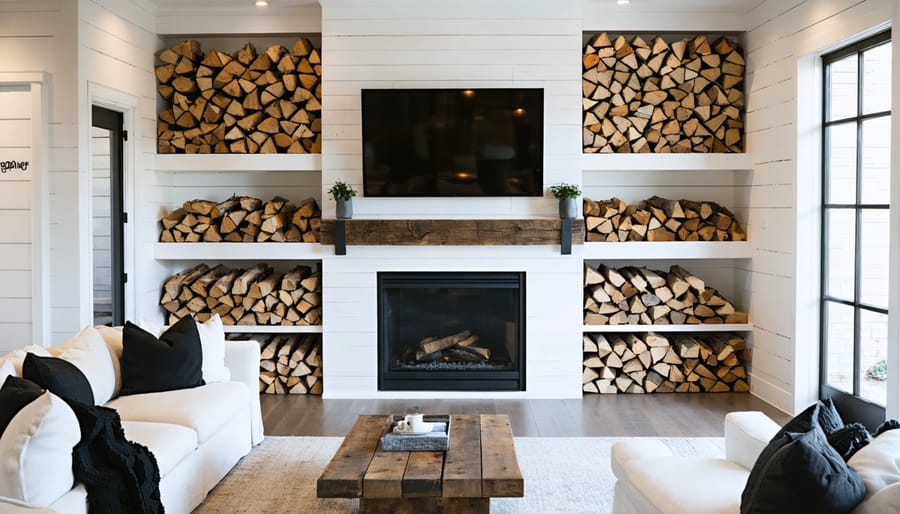Understand that vacuums don’t have R-values—that’s a measure of thermal insulation in walls and windows, not cleaning equipment. If you’ve been searching for the “R-value of a vacuum,” you’re likely trying to figure out which ash vacuum will best handle the messy aftermath of your cozy fireplace fires. What you actually need to know are the performance metrics that matter: suction power measured in air watts, filtration efficiency that prevents fine ash from recirculating into your living space, and heat-resistance capabilities that let you safely clean warm (not hot) ashes without damaging the motor.
The confusion is completely understandable—both fireplaces and insulation relate to home heating, after all. But here’s what truly determines whether an ash vacuum will make your fireplace maintenance effortless or frustrating: motor strength, canister capacity for those frequent winter cleanups, and specialized filtration systems designed specifically for ultra-fine ash particles that regular household vacuums simply can’t handle. Getting the right ash vacuum isn’t just about convenience—it’s about maintaining your fireplace safely and efficiently, protecting your home’s air quality, and ensuring your eco-friendly heating solution remains a joy rather than a chore throughout the burning season.
Understanding R-Value: Why This Term Doesn’t Belong with Ash Vacuums
If you’ve been searching for information about the “r-value of a vacuum,” you’re not alone in this confusion, and we’re here to clear things up in a friendly, helpful way. The truth is, R-value and vacuum cleaners don’t actually go together, but understanding why people search for this term can help you find what you really need.
R-value is a measurement used in the construction and insulation industry. It tells you how well a material resists heat flow through it. Think of it like this: your home’s walls, attic insulation, and windows all have R-values. The higher the R-value, the better that material keeps warmth inside during winter and heat outside during summer. It’s all about thermal resistance in building materials, not cleaning equipment.
So why do people search for “r-value of a vacuum” when shopping for ash vacuums? The confusion likely stems from wanting to understand how well these specialized cleaners perform. You’re asking the right question, just using terminology from a different field entirely. What you’re really looking for is information about suction power, filtration efficiency, heat resistance, and overall performance metrics that matter for cleaning fireplace ash safely and effectively.
There’s no need to feel embarrassed about this mix-up. The world of fireplace maintenance has its own language, and we’re here to guide you through it. When you’re maintaining your fireplace as part of creating that cozy, warm atmosphere in your home, knowing the right terms helps you make better purchasing decisions. Instead of R-value, you’ll want to focus on specifications like motor power measured in amps, filter quality, canister capacity, and temperature ratings that actually determine how well an ash vacuum performs its job.
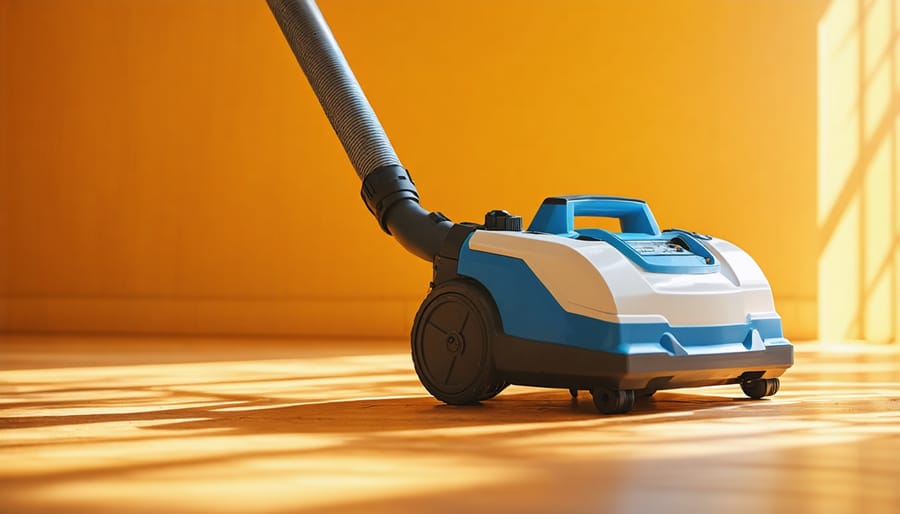
What Really Determines Ash Vacuum Efficiency

Suction Power and Motor Strength
When choosing an ash vacuum for your fireplace, two key performance indicators will guide you to the right choice: CFM (cubic feet per minute) and water lift ratings. Think of CFM as the vacuum’s breathing capacity—it measures how much air the motor moves through the system each minute. For effective ash cleanup, you’ll want a vacuum with at least 60-80 CFM. This ensures the unit can pull fine ash particles into the collection chamber without leaving behind that frustrating dusty residue that seems to settle everywhere.
Water lift, measured in inches, tells you about the vacuum’s raw suction strength—essentially, how powerful the pull is at the nozzle. For regular fireplace maintenance, look for water lift ratings between 40-70 inches. This range provides enough muscle to extract embedded ash from crevices and grout lines while remaining manageable for home use.
Here’s the practical takeaway: higher numbers aren’t always better if they come with excessive noise or energy consumption that doesn’t align with eco-friendly heating solutions. A well-balanced ash vacuum combines adequate CFM for thorough collection with sufficient water lift for stubborn debris. For weekend fireplace cleanouts, a unit with 70 CFM and 50 inches of water lift creates that sweet spot—powerful enough to handle cold ash efficiently while maintaining a comfortable noise level that won’t disrupt your home’s peaceful ambiance.
Heat Resistance and Fire Safety Features
When you’re cleaning up after enjoying a cozy fire, safety should always be your top priority. Quality ash vacuums designed for fireplace maintenance come equipped with essential heat resistance and fire safety features that set them apart from regular household vacuums.
The foundation of a safe ash vacuum starts with its construction. Most reputable models feature metal components rather than plastic housings, which can warp or melt when exposed to residual heat. The metal canister acts as a protective barrier, containing any warm materials you might accidentally vacuum up while giving the debris time to cool completely.
Heat-resistant hoses are another critical safety element. These specially designed hoses can withstand contact with warm ashes without degrading, cracking, or releasing harmful fumes. Standard vacuum hoses simply weren’t built for this purpose and can become a serious fire hazard when used around your fireplace or wood stove.
It’s important to understand the limitations, though. Even the best ash vacuums are designed to handle warm ashes, not hot ones. Following proper warm ash vacuum safety practices means waiting at least 12 to 24 hours after your last fire before cleaning. This waiting period ensures that hidden embers have fully extinguished and the ash has cooled to a safe temperature.
Many quality models also include features like metal mesh filters that won’t catch fire and secure, tight-fitting lids that prevent any stray embers from escaping. These thoughtful design elements work together to create a safer cleaning experience, giving you peace of mind as you maintain your home’s heating centerpiece.
Filtration System Quality
When you’re cleaning ash from your fireplace or wood stove, you might think you’re just dealing with harmless dust, but ash particles are incredibly fine and can pose real health risks if they become airborne in your home. This is where your vacuum’s filtration system becomes absolutely critical.
A quality ash vacuum should feature a HEPA filter or similarly effective fine particulate filtration system. HEPA filters capture 99.97% of particles as small as 0.3 microns, which is essential because ash particles can be microscopic. Without proper filtration, your vacuum essentially becomes a particle distributor, pulling ash from your fireplace only to blast it back into the air you breathe.
Think of it this way: you’re creating a cleaner, healthier living space for your family while enjoying the cozy ambiance of your fireplace. Poor filtration undermines this goal entirely, potentially triggering respiratory issues, allergies, or coating your furniture and surfaces with fine dust that settles long after you’ve finished cleaning.
When shopping for an ash vacuum, don’t compromise on filtration quality. Look for models that specifically mention HEPA or multi-stage filtration systems. Some units include pre-filters that catch larger debris before it reaches the main filter, extending the life of your filtration system and maintaining consistent performance. This is particularly important if you’re committed to eco-friendly heating solutions like wood burning, as it ensures your sustainable lifestyle choice doesn’t come at the expense of your indoor air quality. A properly filtered ash vacuum protects both your home’s warmth and your family’s wellbeing.
Choosing the Right Ash Vacuum for Your Fireplace
Selecting the perfect ash vacuum for your home starts with understanding your unique fireplace lifestyle. Just as you chose your fireplace or wood stove to match your heating needs and aesthetic preferences, your ash vacuum should align with how you use and maintain your hearth.
Consider your fireplace type first. If you enjoy the traditional charm of a wood-burning fireplace, you’ll need a robust vacuum designed to handle larger volumes of ash and occasional hot embers. Wood stoves typically produce more concentrated ash deposits, requiring a vacuum with strong suction and a larger capacity canister. Pellet stove owners often find that smaller, more compact models work beautifully since pellet ash tends to be finer and less voluminous.
Usage frequency plays a significant role in your decision. For those who keep their fireplace glowing throughout the winter months, investing in one of the best ash vacuum cleaners with a 4 to 6-gallon capacity makes practical sense. This larger capacity means fewer trips to empty the canister, making cleanup less of a chore and more of a quick maintenance routine. Weekend fireplace enthusiasts or those who light fires occasionally can comfortably manage with a 3-gallon model, which offers a nice balance between functionality and storage convenience.
Think about your heating setup’s scale too. A single fireplace in your living room has different demands than multiple wood stoves heating your entire home. Multiple heat sources naturally generate more ash, warranting a vacuum with greater capacity and durability to withstand frequent use.
Don’t overlook practical features that enhance your experience. Metal canisters resist heat better than plastic alternatives, supporting your commitment to safe, long-lasting equipment. HEPA filtration systems protect your indoor air quality while you clean, an eco-friendly consideration that keeps your home’s atmosphere healthy. Wheels and flexible hoses make maneuvering around your hearth easier, transforming cleanup from a workout into a straightforward task.
Remember, the right ash vacuum becomes an extension of your fireplace care routine, keeping your heating solution efficient and your living space welcoming throughout the burning season.
Best Practices for Efficient Ash Vacuum Use
The 24-Hour Cool-Down Rule
Here’s the reality that every fireplace owner needs to understand: even ash that looks completely gray and cold can harbor heat for up to 24 hours or longer. This isn’t being overly cautious—it’s fundamental fire safety wisdom that protects both you and your investment in quality cleaning equipment.
Think of ashes like a well-insulated thermos. Those fluffy gray remnants trap heat remarkably well, maintaining temperatures that can damage your vacuum’s filter, melt plastic components, or worse, ignite dust inside the collection chamber. Even heat-resistant ash vacuums designed for warm debris have their limits, and manufacturers specify waiting periods for good reason.
Before vacuuming, use an infrared thermometer to verify ash temperature. Anything above room temperature should wait. This simple step extends your vacuum’s lifespan significantly while preventing dangerous situations. Remember, an eco-friendly approach to fireplace maintenance includes making your equipment last longer, reducing waste and unnecessary replacements.
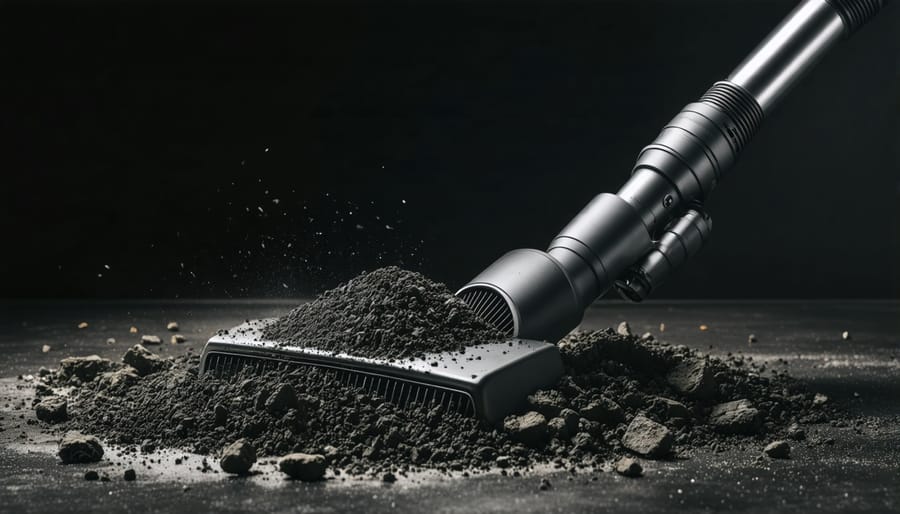
Proper Cleaning Technique
When it comes to vacuuming fireplace ashes, technique matters just as much as having the right equipment. The key is patience—rushing through the job can stir up fine particles that may clog your vacuum or spread dust throughout your home. Start by moving your ash vacuum nozzle slowly across the ash bed, giving the suction time to capture even the finest particles. Think of it as a gentle sweeping motion rather than aggressive cleaning. This methodical approach not only protects your vacuum’s filtration system but also ensures you’re not sending plumes of ash into the air, which isn’t exactly eco-friendly for your indoor environment. Between uses, make it a habit to completely empty your ash vacuum’s collection container, even if it looks only partially full. Ash compacts differently than regular household debris, and a full canister significantly reduces suction power. Plus, lingering ash can retain moisture, potentially causing corrosion inside your vacuum. By maintaining these simple practices, you’ll keep your fireplace area clean while extending the life of your vacuum, making your cozy hearth a true lifestyle centerpiece without the mess.
Filter Maintenance That Extends Vacuum Life
Think of your ash vacuum’s filter as the lungs of the system. Just like keeping your fireplace clean creates a healthier home environment, maintaining those filters ensures your vacuum keeps breathing easy season after season.
After each use, give your filter a gentle tap or shake outdoors to dislodge loose ash particles. This simple 30-second habit prevents fine ash from compacting into the filter material, which is what really chokes off suction power over time. For deeper cleaning, many filters can be brushed or rinsed with water—just make sure they’re completely dry before reinstalling to prevent any moisture damage.
Most ash vacuum filters need replacement every 12-18 months with regular use, though heavy fireplace users might need fresh filters annually. Watch for telltale signs like reduced suction, longer cleaning times, or the motor working harder than usual. These signals mean your filter’s reached its limit.
Investing in quality replacement filters protects your motor from the microscopic ash particles that can work their way past worn filters and cause premature failure. Think of it as affordable insurance for your heating cleanup routine—a small maintenance cost that prevents expensive replacements down the road.
Now that we’ve cleared up the R-value confusion, you’re equipped with the right knowledge to choose an ash vacuum that truly performs. Remember, while R-value measures insulation, what really matters for your ash vacuum is suction power, filtration quality, heat resistance, and tank capacity. These are the features that determine whether you’ll have a quick, efficient cleanup or a frustrating experience with flying ash particles.
When shopping for your next ash vacuum, focus on practical specifications rather than getting caught up in unrelated terminology. Look for models with strong motors (at least 800 watts), excellent HEPA filtration systems to protect your indoor air quality, and metal components that can safely handle warm ashes. And don’t forget that even the best vacuum works better when you follow proper techniques, like allowing ashes to cool adequately and cleaning filters regularly.
Your fireplace should be a source of warmth, comfort, and ambiance in your home, not a chore that creates mess and stress. By understanding what actually makes an ash vacuum effective and maintaining it properly, you’re investing in a cleaner, safer, and more enjoyable fireplace experience for years to come.

